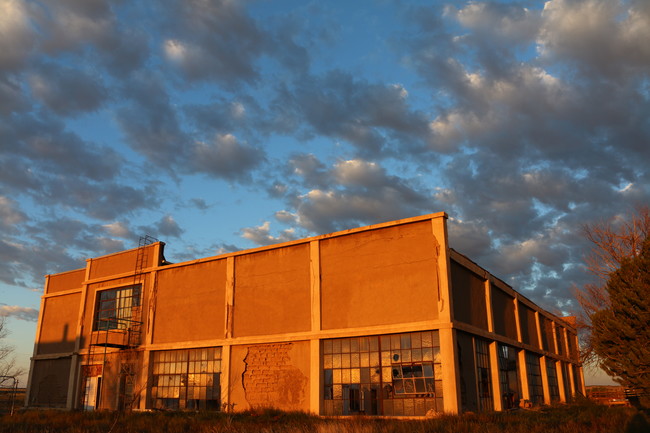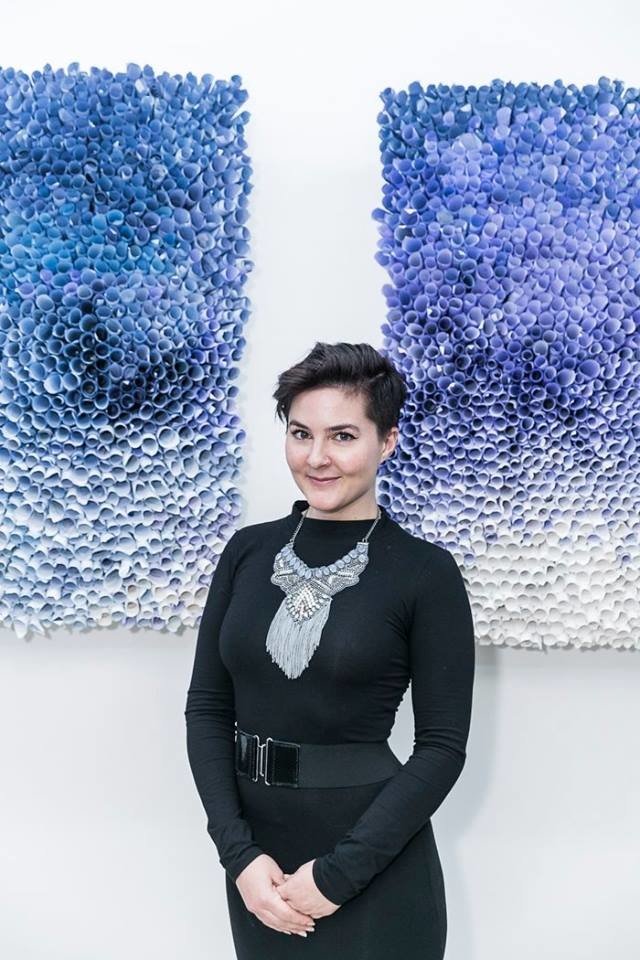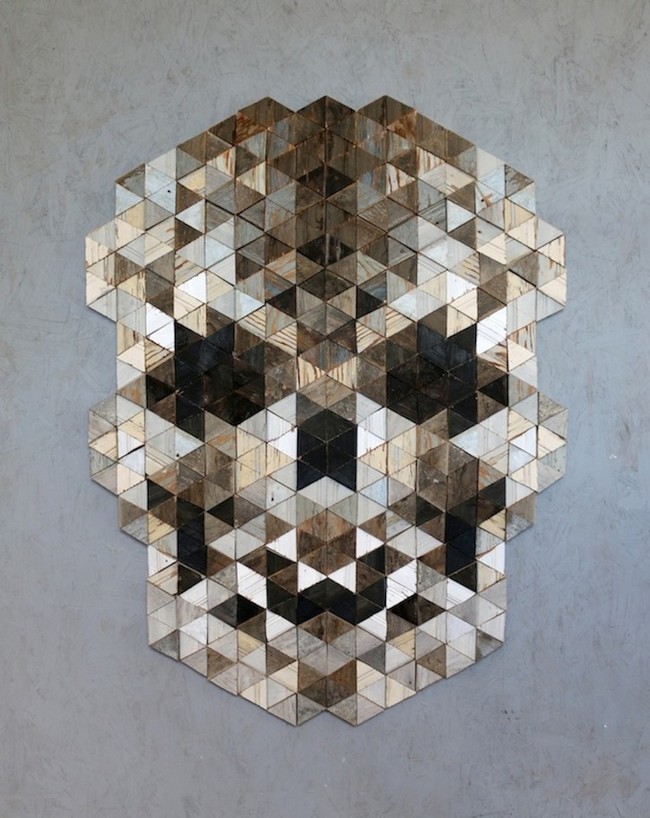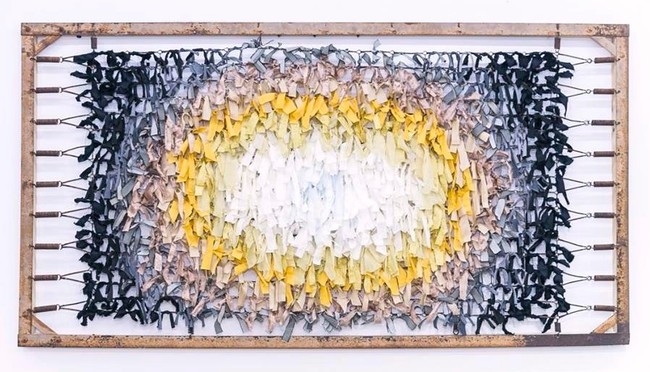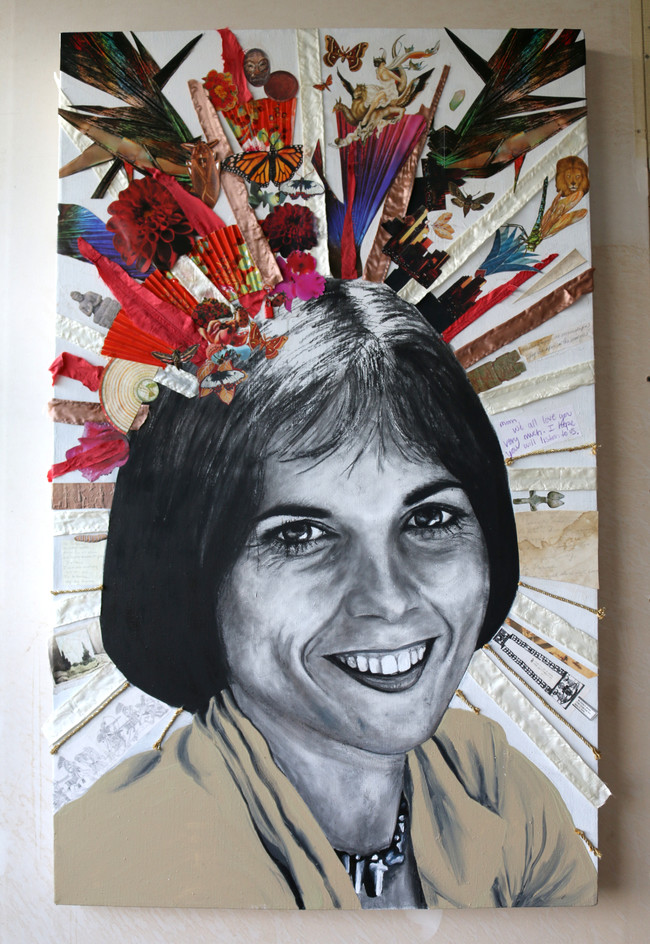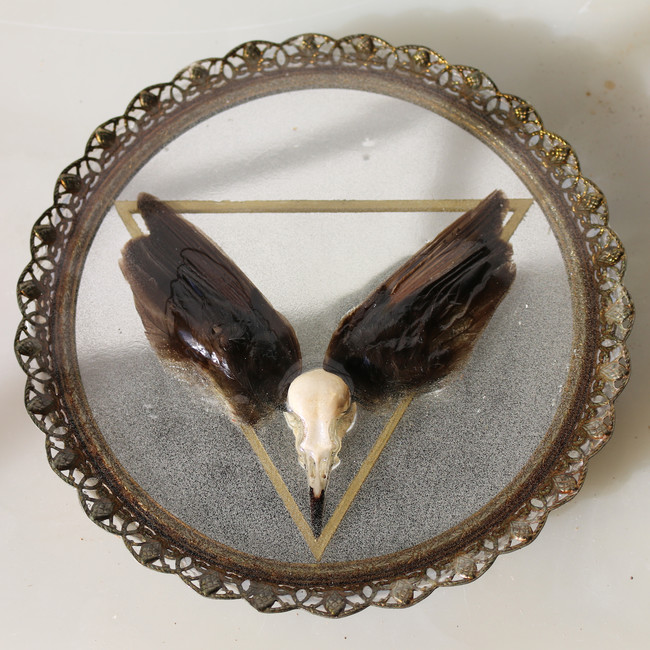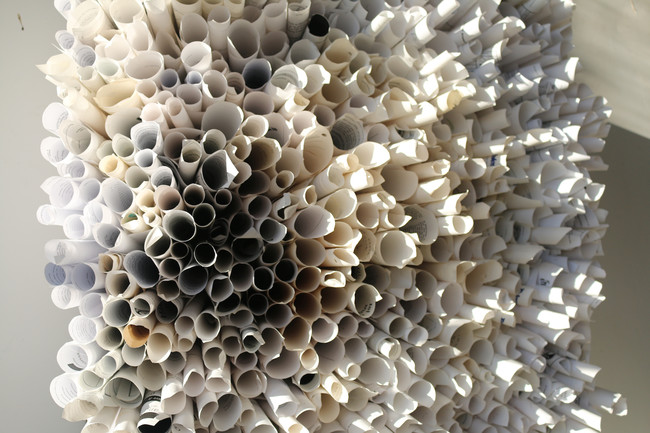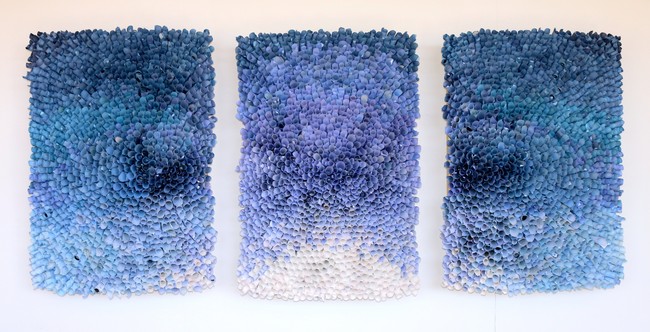Art is often thought about from the perspective of the viewer. It makes sense, because viewership is the practice of many, and creation is the practice of relatively few. But let’s take a step back and consider the fact that creative work lives a long, unseen life before it ends up in front of us. In many ways, what goes into the creation of a piece is far more profound than anything we could possibly take away from it.
Artist Stephanie Calvert is more than a little bit familiar with that experience. Her latest series, which is an ongoing endeavor called the Shame to Pride Project, has evolved into something that is both restorative and revelatory.
Calvert’s mission started after an unexpected and painful homecoming.
Growing up in an abandoned schoolhouse in rural Colorado proved to be an isolating experience for the artist. “I lived there for six years without plumbing, central heat, or full electricity. Disconnected from the community, my mother’s hoarding took over a lot of the space. It was a strange and challenging place to grow up.”
Once her parents left the space, it was abandoned once again. Calvert only returned when tragedy struck.
Her mother sustained major injuries in a horrible accident, so the artist began spending more time in her hometown to lend a helping hand. Shame to Pride was born when she stepped back in time to the schoolhouse that held so many convoluted memories.
Because the old schoolhouse sat exactly as they’d left it so many years ago, the fruits of her mother’s hoarding remained. Instead of discarding it in shame, Calvert vowed to repurpose it all into a testament to family and the nature of memory.
“I used the experience of transforming physical materials as a way to transform my relationship to my story,” she writes. The more time she spent surrounded by her family history, the more comfortable she became with the idea of embracing her past with honesty.
“Revisiting my past,” she continues, “brought a lot up to the surface for me, and in sharing things about my mom’s accident, I started sharing more about my past as well.”
What started as an introspective project soon became something of an outreach mission.
“At first, I started Shame to Pride very much for my own mental and emotional wellbeing,” she writes. “When I started sharing my art with friends, I started to see the potential for connection to others through this work.”
According to the artist, “Through sharing with others and having them bear witness to our stories, we start to heal and accept ourselves just as we are, no matter where we come from.”
The effect that Shame to Pride has had on Calvert is nothing short of transformative.
“Once I started looking at things creatively,” she writes, “I was able to see the value not just in these physical things, but in my past, my family, and my experiences. It’s not what happens to us that defines us. It’s how we respond to it, and the intentions we have in moving forward.”
She now wants to invite others to share in this experience in a way that helps them confront their own pasts and begin the healing process.
She’s even started an Indiegogo campaign so that she can raise enough money to bring this project to New York and extend the reach of her process far beyond the borders of her hometown.
In her words, “I have gained so much freedom from how I used to think and feel. I feel so much lighter. I see how special and beautiful my upbringing was, and how it helped shape me into the creative and unique person I am today. I feel gratitude where I used to feel shame.”
(via Indiegogo)
And now we return to the viewer’s experience. What Calvert wants us to take away from the Shame to Pride Project is simple: “I want people to take away the importance of sharing — especially when it comes to the things we feel shame, guilt, and sadness over.”
If you want to lend Stephanie Calvert a helping hand, be sure to check out her Indiegogo page. For more of her incredible work, pay a visit to her website.
